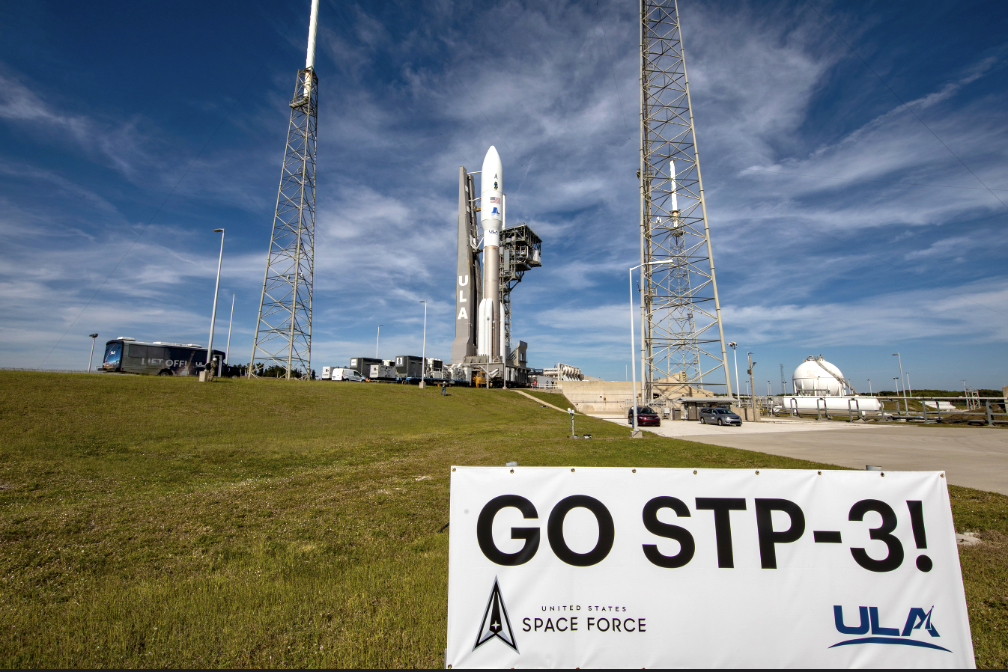
A United Launch Alliance (ULA) Atlas V rocket carrying the Space Test Program (STP)-3 mission for U.S. Space Force lifts off from Space Launch Complex-41 at 5:19 a.m., EDT, on Dec.ember7, 2021.

The STP-3 mission consists of the STPSat-6 satellite that hosts the National Nuclear Security Administration‘s Space and Atmospheric Burst Reporting System-3 (SABRS-3) package and NASA’s Laser Communications Relay Demonstration (LCRD) experiment. The launch also includes a propulsive secondary payload adapter carrying additional small science and technology missions.

The mission launched on an Atlas V 551 configuration rocket that included a 5.4 meter payload fairing and stands 196 ft. (59.7 m) tall. The Atlas booster for this mission is powered by the RD AMROSS RD-180 engine. Aerojet Rocketdyne provided the RL10C-1 engine for the Centaur upper stage and Northrop Grumman provided the five Graphite Epoxy Motors (GEM) 63 solid rocket boosters.
This was the 90th launch of the Atlas V rocket. To date, ULA has launched 146 times with 100 percent mission success.
- STP-3 is a co-manifested mission that matures technology and reduces future space program risk for the Department of the Air Force and the U.S. Space Force by advancing warfighting capabilities in the areas of nuclear detonation detection, space domain awareness (SDA), weather, and communication. Both spacecraft will be delivered to geosynchronous orbit. Liftoff will occur from Space Launch Complex-41 at Cape Canaveral Space Force Station, Florida.
- The OoA payload fairing was developed with a new manufacturing method, an alternative process to cure carbon fiber composites, which allows for a more efficient production process, lower cost and lower system mass while maintaining the same level of reliability and quality.
- The Atlas V is also equipped with a new In-Flight Power System (IFPS). This system supplies power to the satellites’ batteries during the rocket’s long duration ascent, a mission more than seven hours. The IFPS will ensure the spacecraft have fully charged batteries when deployed into geosynchronous orbit.
- GPS Enhanced Navigation is an additional first flight item that utilizes existing flight computer hardware to provide GPS signals that improve the Centaur‘s navigation system performance, allowing the Centaur to achieve even more accurate orbits.
“STP-3 is a unique mission as the Atlas V will deliver STP-3 directly into Geosynchronous Equatorial Orbit (GEO). This is a highly complex orbital insertion that requires three Centaur burns and precise navigation, a capability unique to the Atlas V. This is our longest mission to date at seven hours and 10 minutes until final spacecraft separation,” said Gary Wentz, ULA vice president of Government and Commercial Programs. “We are proud to work alongside our mission partners to prepare to launch this challenging mission and thank them for their outstanding teamwork.”

